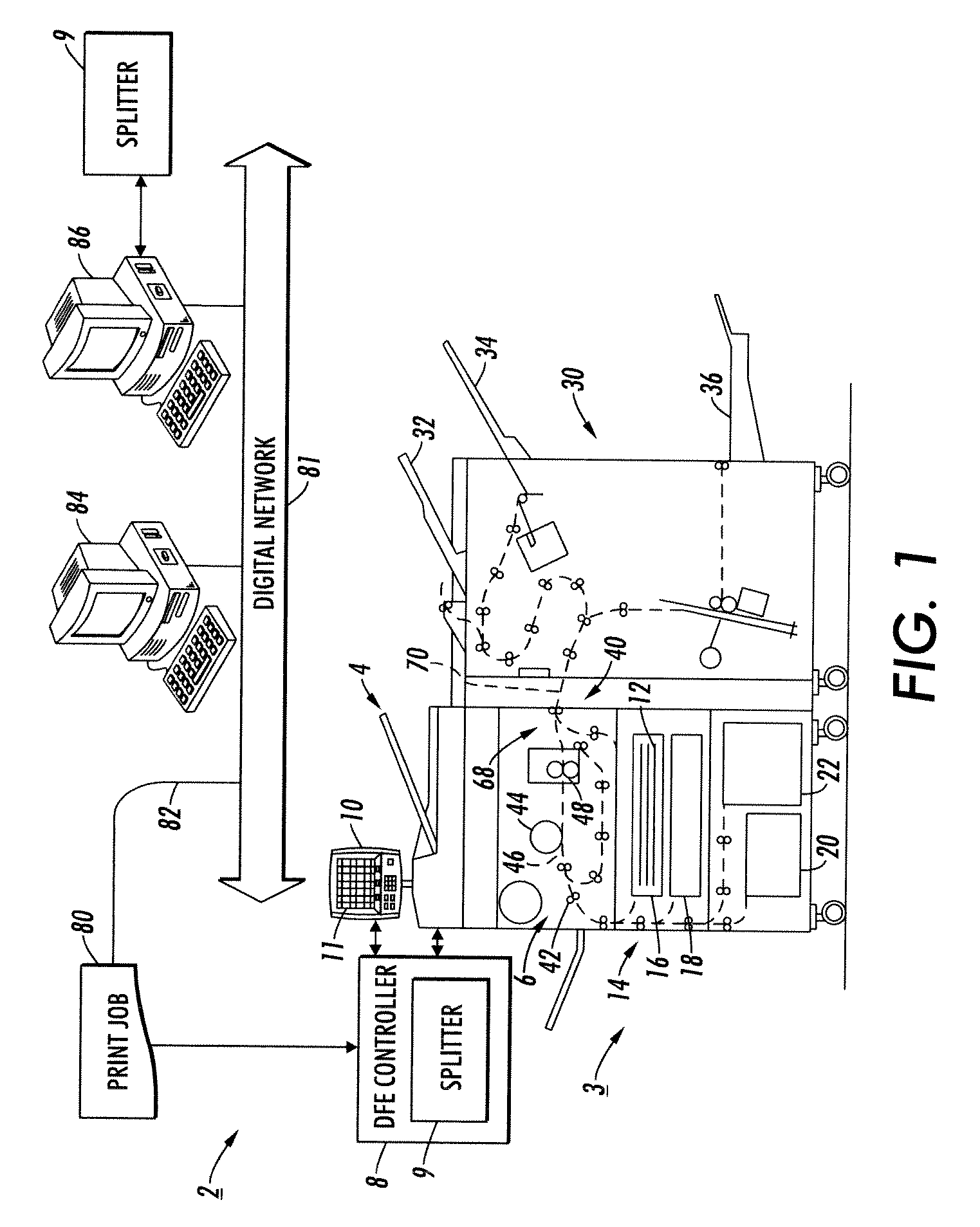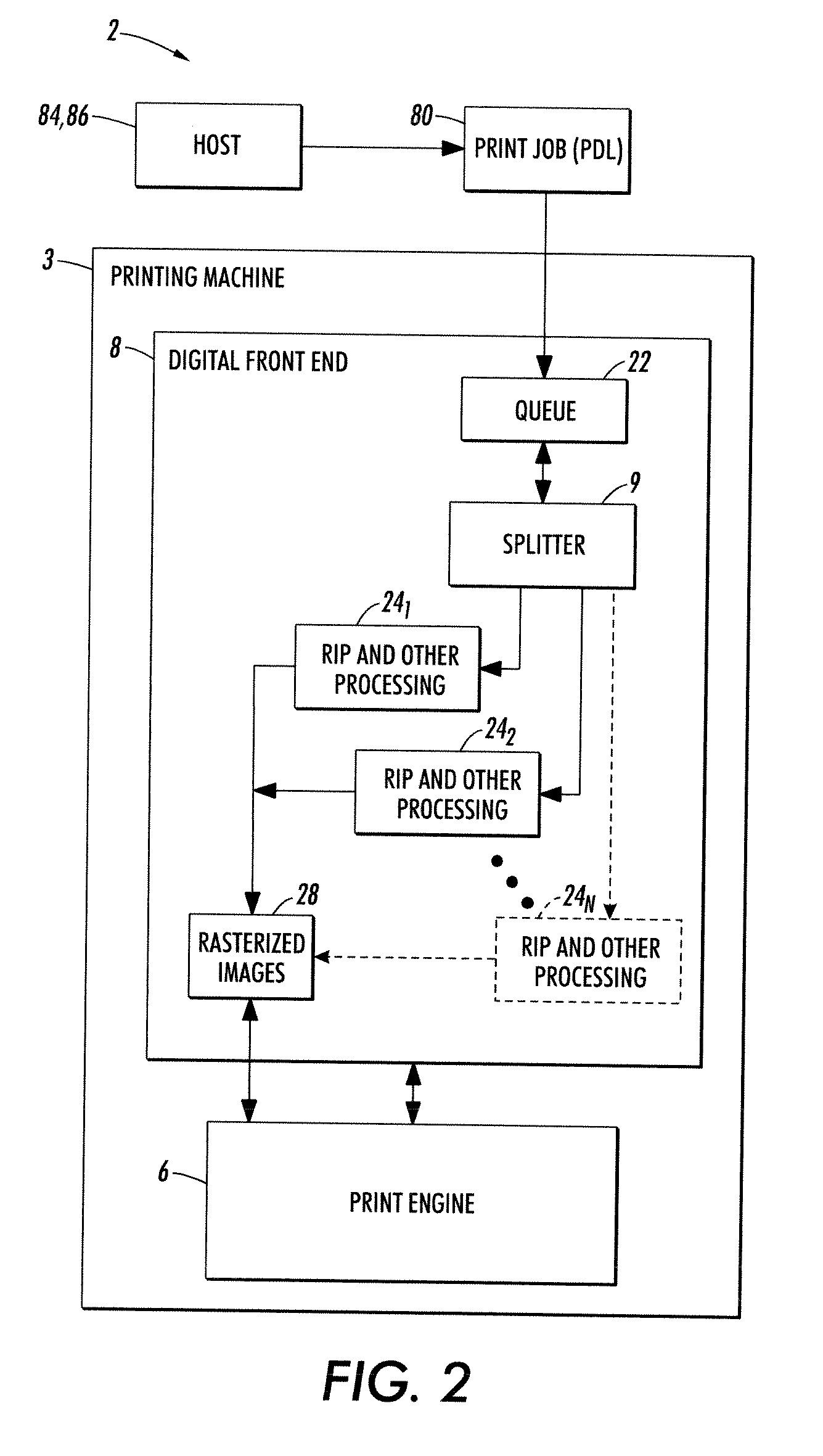Automated prepress methods for improving page parallel rip performance
- Summary
- Abstract
- Description
- Claims
- Application Information
AI Technical Summary
Benefits of technology
Problems solved by technology
Method used
Image
Examples
Embodiment Construction
[0015]Referring now to the drawing figures, several embodiments or implementations of the present disclosure are hereinafter described in conjunction with the drawings, wherein like reference numerals are used to refer to like elements throughout, and wherein the various features, structures, and graphical renderings are not necessarily drawn to scale. The disclosure relates to job file processing in which job files 80 are split into multiple chunk parts or chunks 202 to create a plurality of chunk files 300 suitable for subsequent raster image processing. In addition, the disclosure advantageously facilitates improvements in downstream RIP processing, particularly in systems utilizing page parallel RIP concepts through intelligent construction of efficient chunk files 300, such as PDF chunk files that include the resources 250 required for a page or pages 220 included in the chunk 202, but without extraneous resources not needed for the pages of the chunk. As illustrated and descri...
PUM
 Login to View More
Login to View More Abstract
Description
Claims
Application Information
 Login to View More
Login to View More - R&D
- Intellectual Property
- Life Sciences
- Materials
- Tech Scout
- Unparalleled Data Quality
- Higher Quality Content
- 60% Fewer Hallucinations
Browse by: Latest US Patents, China's latest patents, Technical Efficacy Thesaurus, Application Domain, Technology Topic, Popular Technical Reports.
© 2025 PatSnap. All rights reserved.Legal|Privacy policy|Modern Slavery Act Transparency Statement|Sitemap|About US| Contact US: help@patsnap.com



